My long-term ongoing project involves reading backwards into the critique of modernity, resurrecting from the archive writers who fifty, seventy-five, or even one hundred years ago, intuited prophetically where such trends as democracy, utilitarianism, and the technocratic conception of science were taking mankind – and who foresaw accurately just how deformed morally and socially Western civilization was likely to become. The writers in question, with a few exceptions, are today largely forgotten or are remembered under a false image or for spurious reasons. The names of Karen Blixen, Gustave Le Bon, Jorge Luis Borges, Julius Evola, René Guénon, Hermann Keyserling, Peter Ouspensky, Oswald Spengler, T. Lothrop Stoddard, and Sigrid Undset, among others, have appeared in a series of articles, most of them at The Brussels Journal. I wish, however, to devote the present occasion to a renewed discussion of the Russian writer-philosopher Nicolas Berdyaev (1874 – 1948), whom the encyclopedias of ideas classify variously, not to say confusingly, as a Christian Existentialist, a Russian Nietzschean, a Neo-Platonist, a follower of Vladimir Solovyev, or an out-and-out mystic and subjectivist. Berdyaev is perhaps a bit of each of these, while being also much more than any of them. Academic philosophers have either never heard of Berdyaev or, knowing of him at second hand, perhaps from an encyclopedia article, and being unable to fit him into any Positivist or Postmodern framework, dismiss him summarily.
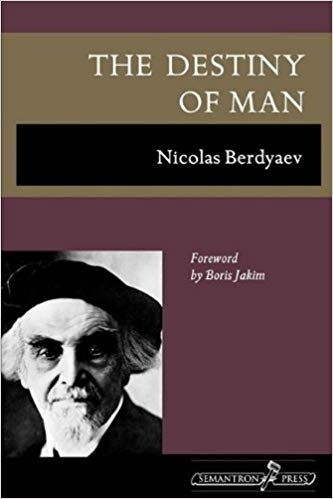 One might fairly assert that Berdyaev did himself little good publicity-wise by cultivating a style of presentation which, while often resolving its thought-processes in a brilliant, aphoristic utterance, nevertheless takes its time, looks at phenomena from every aspect, analyzes every proposition to its last comma and period, and tends to assert its findings bluntly rather than to argue them politely in the proper syllogistic manner. In Berdyaev’s defense, a sensitive reader might justifiably interpret his leisurely examination of the modern agony as a deliberate and quite appropriate response to the upheavals that harried him from the time of the 1905 Revolution to the German occupation of France during World War II. If the Twentieth Century insisted on being precipitate and eruptive in everything, without regard to the lethal mayhem it wreaked, then, by God, Berdyaev, regarding his agenda, would take his sweet time. Not for him the constant mobilized agitation, the sloganeering hysteria, the goose-stepping and dive-bombing spasms of modernity in full self-apocalypse. That is another characteristic of Berdyaev – he is all at once leisurely in style and apocalyptic in content. Berdyaev was quite as apocalyptic in his expository prose as his idol Fyodor Dostoevsky was in his ethical narrative, and being a voice of revelation he expressed himself, again like Dostoevsky, in profoundly religious and indelibly Christian terms. Berdyaev follows Dostoevsky and anticipates Alexander Solzhenitsyn in his conviction that no society can murder God, as Western secular society has gleefully done, and then go its insouciant way, without consequence.
One might fairly assert that Berdyaev did himself little good publicity-wise by cultivating a style of presentation which, while often resolving its thought-processes in a brilliant, aphoristic utterance, nevertheless takes its time, looks at phenomena from every aspect, analyzes every proposition to its last comma and period, and tends to assert its findings bluntly rather than to argue them politely in the proper syllogistic manner. In Berdyaev’s defense, a sensitive reader might justifiably interpret his leisurely examination of the modern agony as a deliberate and quite appropriate response to the upheavals that harried him from the time of the 1905 Revolution to the German occupation of France during World War II. If the Twentieth Century insisted on being precipitate and eruptive in everything, without regard to the lethal mayhem it wreaked, then, by God, Berdyaev, regarding his agenda, would take his sweet time. Not for him the constant mobilized agitation, the sloganeering hysteria, the goose-stepping and dive-bombing spasms of modernity in full self-apocalypse. That is another characteristic of Berdyaev – he is all at once leisurely in style and apocalyptic in content. Berdyaev was quite as apocalyptic in his expository prose as his idol Fyodor Dostoevsky was in his ethical narrative, and being a voice of revelation he expressed himself, again like Dostoevsky, in profoundly religious and indelibly Christian terms. Berdyaev follows Dostoevsky and anticipates Alexander Solzhenitsyn in his conviction that no society can murder God, as Western secular society has gleefully done, and then go its insouciant way, without consequence.
The titles of Berdyaev’s numerous books, especially when taken in chronological order, tell a story all by themselves: The Meaning of the Creative Act (1916), The Meaning of History (1923), The End of Our Time (1924), Christianity and Class War (1931), The Destiny of Man (1931), The Fate of Man in the Modern World (1934), Christianity and Anti-Semitism (1938), Slavery and Freedom (1939), Spirit and Reality (1946), and The Beginning and the End (1947), among many others. There is also a posthumous Truth and Revelation (1954). I call attention to the earliest of the listed titles, The Meaning of the Creative Act. Berdyaev began his career as a philosophical writer (he never completed his doctorate) with an ambitious study of aesthetics, his theory of which locates the purest manifestation of the highest value of his worldview, freedom, in the labor that generates the work of art and beyond that in all the highest effects of the artwork in its context. At the end of Berdyaev’s life, he wrote the essays that constitute Truth and Revelation,one of his several ventures into the philosophical-theological sub-genre of theodicy, in which he invokes a “creative response to the appeal of God.” Whereas in the Catholic and even more so in the Lutheran and Calvinist variants of Christianity there is, according to Berdyaev, a strong “sociomorphic” or “legalistic” distortion of Christian doctrine; in Russian Orthodox commentary, by contrast, “the coming of the Christ has been understood not as a reparation for sin, nor as the offering of a ransom, but as the continuation of the creation of the world and the appearance of the New Adam.” In Berdyaev’s view, “What God expects from man is not servile submission, not obedience, not the fear of condemnation, but free creative acts.” Berdyaev adds in an aside that, “I wrote on this subject some while ago in The Meaning of Creativeness,” that is, The Meaning of the Creative Act. Thus Berdyaev’s work exhibits a remarkable closure, returning at the end to its beginnings, linking as it were its omega with its alpha.
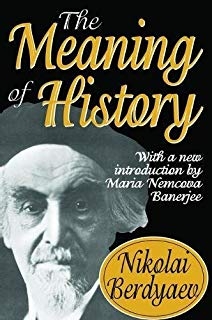 By the mid-1930s, in the extended aftermaths of World War I and the Bolshevik Revolution, and in the context of the ideological dictatorships, the conviction had impressed itself on Berdyaev that the existing Western arrangement, pathologically disordered, betokened the dissolution of civilization, not its continuance. In The Fate of Man in the Modern World, Berdyaev summarizes his discovery. In modernity, a brutal phase of history, the human collectivity must endure the effects of ancestral decisions, which subsequent generations might have altered but chose instead to endorse, and live miserably or perhaps die according to them. Modernity is thus history passing judgment on history, as Berdyaev sees it; and modernity’s brutality, its nastiness, and its inhumanity all stem from the same cause – the repudiation of God and the substitution in His place of a necessarily degraded “natural-social realm.” Berdyaev writes, “We are witnessing the socialization and nationalization of human souls, of man himself.” Some causes of this degeneracy lie proximate to their effects. “Modern bestialism and its attendant dehumanization are based upon idolatry, the worship of technics, race or class or production, and upon the adaptation of atavistic instincts to worship.” Again, “Dehumanization is… the mechanization of human life.” With mechanization comes also the “dissolution of man into… functions.”
By the mid-1930s, in the extended aftermaths of World War I and the Bolshevik Revolution, and in the context of the ideological dictatorships, the conviction had impressed itself on Berdyaev that the existing Western arrangement, pathologically disordered, betokened the dissolution of civilization, not its continuance. In The Fate of Man in the Modern World, Berdyaev summarizes his discovery. In modernity, a brutal phase of history, the human collectivity must endure the effects of ancestral decisions, which subsequent generations might have altered but chose instead to endorse, and live miserably or perhaps die according to them. Modernity is thus history passing judgment on history, as Berdyaev sees it; and modernity’s brutality, its nastiness, and its inhumanity all stem from the same cause – the repudiation of God and the substitution in His place of a necessarily degraded “natural-social realm.” Berdyaev writes, “We are witnessing the socialization and nationalization of human souls, of man himself.” Some causes of this degeneracy lie proximate to their effects. “Modern bestialism and its attendant dehumanization are based upon idolatry, the worship of technics, race or class or production, and upon the adaptation of atavistic instincts to worship.” Again, “Dehumanization is… the mechanization of human life.” With mechanization comes also the “dissolution of man into… functions.”
But what of the radical cause, or causes, that conceals itself, or that conceal themselves, behind these immediate ones? Towards the end of The Fate, Berdyaev divulges, almost in passing, his sense that “the end of the Renaissance is approaching.” The formula might strike a person as odd. Have not several distinguishable phases passed since the Renaissance? And was not the Renaissance precisely an era of those “free creative acts” that Berdyaev so values? For Berdyaev, however, the prevailing disorder of the contemporary world would stem from that selfsame conscious reorientation in existence that modernity delights in celebrating, in the most fulsome and effusive terms, as its own bright dawn after the supposed long darkness of the Middle Ages. The tragic despiritualization of the West began, in Berdyaev’s historical analysis, with the bold proclamation of emancipatory humanism in the artistic and philosophical audacity of Fourteenth Century Italian city-states, whose hubris only now smashes headlong into its proper nemesis. Berdyaev omits to detail this claim in The Fate, but readers might access his full argument in two of his other titles, The Meaning of the Creative Act and The Meaning of History.
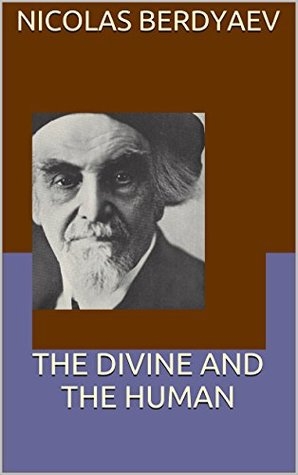 One of the pleasures of reading backwards into the dissentient discussion of modernity is the discovery of contrarian judgments, such as Berdyaev’s concerning the Florentine revival of classicism, that stand in refreshing variance with existing conformist opinion. Will Durant sums up the standing textbook view of the Renaissance in Volume 5 (1953) of his Story of Civilization. When “the humanists captured the mind of Italy,” as Durant writes, they “turned it from religion to philosophy, from heaven to earth, and revealed to an astonished generation the riches of pagan thought and art.” Having accomplished all that, according once again to Durant, the umanisti reorganized education on the premise that “the proper study of man was now to be man, in all the potential strength and beauty of his body, in all the joy and pain of his senses and feelings, [and] in all the frail majesty of his reason.” Durant’s tone implies something beyond mere description; it implies laudatory approval. Before turning back to Berdyaev, it is worth remarking how obviously wrongheaded Durant is in so few words. Insofar as the umanisti adopted Platonism – or rather late Neo-Platonism – they cannot exactly be said exclusively to have “turned” the general attention “from heaven to earth.” Rather, they refocused that attention from the transcendent God of the Bible and the Church Doctors to the celestial powers of Porphryian cosmology, the ones who might be manipulated by magical formulas to serve their earthly masters. Now in adopting Protagoras’ maxim that, man is the measure, the umanisti did, in fact, “terrestrialize” thinking. They achieved their end, however, only at the cost of swapping a cosmic-teleological perspective for an egocentric-instrumental one. It was an act of self-demotion. Had Berdyaev lived to read Durant’s Renaissance, he himself would inevitably have remarked these easy-to-spot misconceptions.
One of the pleasures of reading backwards into the dissentient discussion of modernity is the discovery of contrarian judgments, such as Berdyaev’s concerning the Florentine revival of classicism, that stand in refreshing variance with existing conformist opinion. Will Durant sums up the standing textbook view of the Renaissance in Volume 5 (1953) of his Story of Civilization. When “the humanists captured the mind of Italy,” as Durant writes, they “turned it from religion to philosophy, from heaven to earth, and revealed to an astonished generation the riches of pagan thought and art.” Having accomplished all that, according once again to Durant, the umanisti reorganized education on the premise that “the proper study of man was now to be man, in all the potential strength and beauty of his body, in all the joy and pain of his senses and feelings, [and] in all the frail majesty of his reason.” Durant’s tone implies something beyond mere description; it implies laudatory approval. Before turning back to Berdyaev, it is worth remarking how obviously wrongheaded Durant is in so few words. Insofar as the umanisti adopted Platonism – or rather late Neo-Platonism – they cannot exactly be said exclusively to have “turned” the general attention “from heaven to earth.” Rather, they refocused that attention from the transcendent God of the Bible and the Church Doctors to the celestial powers of Porphryian cosmology, the ones who might be manipulated by magical formulas to serve their earthly masters. Now in adopting Protagoras’ maxim that, man is the measure, the umanisti did, in fact, “terrestrialize” thinking. They achieved their end, however, only at the cost of swapping a cosmic-teleological perspective for an egocentric-instrumental one. It was an act of self-demotion. Had Berdyaev lived to read Durant’s Renaissance, he himself would inevitably have remarked these easy-to-spot misconceptions.
“There is a profound contrast,” Berdyaev writes in The Meaning of the Creative Act, “between pagan art and Christian art,” or at any rate “the art of the Christian epoch.” Pagan art, in Berdyaev’s judgment, is “canonic art”; it remains “immanent in this world, rather than transcendent.” Like the sociomorphic-legalistic forms of religion, canonic art “is still in the law” and still adheres to “obedience.” Classicism, another word for the canonical, “leaves one in this world, giving only hints of another.” In Berdyaev’s summary: “The heavens are closed above pagan art and the ideals of perfection are of the here and now, rather than of the beyond.” Finally, Christian art “is of another spirit.” Where paganism conceived the world under the form of “a complete and closed dome, beyond which there was nothing,” for Christianity “Heaven opened above the… world and revealed the beyond.” It follows for Berdyaev that because the essence of the Christian world-orientation is “a transcendental intention towards another world,” a “romantic longing,” as he puts it; then “romantic incompleteness and imperfection of form characterize Christian art.” Of course, both the pagan and the Christian impulses in art contain within themselves the possibility of self-stultification. Thus, “Antique classicism,” as Berdyaev writes, despite its attestation of “a structure of this world,” is subject to deformation into “dead academicism.” Thus, too, Christian art is prone to be “romantically ailing,” making a theme of its yearning, which degenerates into alienation and melancholy, while going blind to the lodestar that makes it to yearn in the first place. Nevertheless, the Christian consciousness and Christian art represent a revelation of being well beyond what Antiquity could conceive. Infinity, lying at the heart of Christian sensibility and provoking it into motion, remained unimaginable to the ancients.
If a reader were to guess, respecting the artistic legacy, that Berdyaev preferred the period stretching from St. Francis of Assisi and Dante Alighieri to Cimabue and Giotto (say) to (say) the period stretching from Filippo Brunelleschi and Marsilio Ficino to Michelangelo Buonarroti and Pico Della Mirandola, he would have guessed correctly. I would caution, however, that Berdyaev’s comparative judgment never constitutes anything like a blanket-condemnation of the yoked Quattrocento and Cinquecento. Far from it – his appreciation runs high, but it runs to the critical. Berdyaev sees what these latter two centuries, in their creativity, portended, and he regards them as a derailment of the Western spirit antecedent to his own century’s deepened plight: “The world crisis of creativity is the crisis of canonic art.” When Berdyaev writes that “canonic art is the adaptation of the creative artist’s energy to the conditions of this world,” his construction superficially resembles Durant’s while at the same time diametrically contradicting it. An art that had remained Christian would have continued to concern itself with the problem how the spirit might “break out through ‘this world’ to another world, out of the chaotic, heavy, and deformed world into the free and beautiful cosmos.” In this way it can be so, portentously, that “the end of the Renaissance is approaching.” What about actual cases? What does Berdyaev say in respect of this or that poet, painter, sculptor, musician, or philosopher?
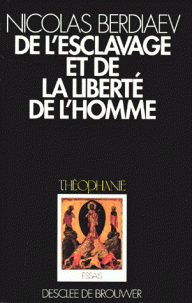 In The Meaning of the Creative Act, Berdyaev takes Benvenuto Cellini – a much-romanticized figure, using the adjective “romanticized” in its populist connotation – for one signal specimen of the “Renaissance Man.” Berdyaev is fully aware that describing the Renaissance simply as a revival of paganism amounts to inexcusable naïvety. “The great Italian Renaissance,” he writes, “is vastly more complex than is usually thought.” Berdyaev sees the so-called rebirth of classical letters and art as a botched experiment in dialectics, during which “there occurred such a powerful clash between pagan and Christian elements in human nature as had never occurred before.” The tragedy of the Renaissance consists in the fact, as Berdyaev insists, that, “the Christian transcendental sense of being had so profoundly possessed men’s nature that the integral and final confession of the immanent ideals of life became impossible.” Cellini embodies the conflict. In his life, no matter how declaredly “pagan,” “there is still too much of Christianity.” Cellini could never have been “an integral man,” as his moral degeneracy and spasmodic repentance attested. In Berdyaev’s argument, Christianity has effectuated, however imperfectly, a theurgic alteration in being towards a higher level. Cellini’s life illustrates the point. The attempt to return to being at a lower level must fail, as it failed for Cellini; it can bring only suffering to the subject and in the milieu that attempts it.
In The Meaning of the Creative Act, Berdyaev takes Benvenuto Cellini – a much-romanticized figure, using the adjective “romanticized” in its populist connotation – for one signal specimen of the “Renaissance Man.” Berdyaev is fully aware that describing the Renaissance simply as a revival of paganism amounts to inexcusable naïvety. “The great Italian Renaissance,” he writes, “is vastly more complex than is usually thought.” Berdyaev sees the so-called rebirth of classical letters and art as a botched experiment in dialectics, during which “there occurred such a powerful clash between pagan and Christian elements in human nature as had never occurred before.” The tragedy of the Renaissance consists in the fact, as Berdyaev insists, that, “the Christian transcendental sense of being had so profoundly possessed men’s nature that the integral and final confession of the immanent ideals of life became impossible.” Cellini embodies the conflict. In his life, no matter how declaredly “pagan,” “there is still too much of Christianity.” Cellini could never have been “an integral man,” as his moral degeneracy and spasmodic repentance attested. In Berdyaev’s argument, Christianity has effectuated, however imperfectly, a theurgic alteration in being towards a higher level. Cellini’s life illustrates the point. The attempt to return to being at a lower level must fail, as it failed for Cellini; it can bring only suffering to the subject and in the milieu that attempts it.
Even in the case of another, earlier specimen of the “Renaissance Man,” Sandro Botticelli, the artistic creativity betokens something, as Berdyaev says, “beautiful but painfully divided.” Berdyaev regards Botticelli, that essential nature of the Quattrocento, as “the most beautiful, the most deeply moved, the most poetic artist of the Renaissance, and as the most divided and unsound.” The division in Botticelli manifests itself in the crosswise ambiguity of his Venuses and Madonnas: “His Venuses always resembled his Madonnas, just as his Madonnas resembled his Venuses.” The crossing implies a disaster because for the Venus to be raised up from the elements the Madonna must be brought down from infinity. The gesture flatters Venus but it contradicts the essence of the Madonna. Botticelli can create a vernal image of surpassing grace and yet fail to break through to the other world because “classic immanent perfection can no longer be the portion of the Christian soul which has been touched by transcendent longing.” Botticelli’s career ends in a paroxysm of self-denial under the puritanical influence of Savonarola. The “secret of the Renaissance,” as Berdyaev writes, “is that it did not succeed.” The rebirth of pagan innocence implied in Botticelli’s Primaverapromised much but reached a terminus short of patency in Botticelli’s own “renunciation” and thereafter in the “dead academicism” of later artists – most notably for Berdyaev Raphael and Michelangelo. Berdyaev writes: “Raphael’s classicism in the Christian world produces an impression of deadly rigidity, almost as though it were superfluous, a failure more complete and fatal than the imperfection and division of men in the Quattrocento.” After Raphael and Michelangelo comes the Baroque.
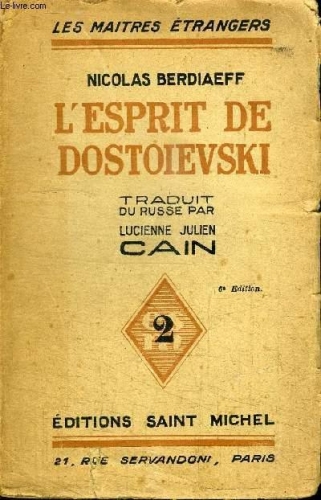 Berdyaev emphasizes the drastic diremption of the Quattrocento by reminding his readers of the earliest, purely Christian phase of the Renaissance. “It was in mystic Italy, in Joachim de Floris, that the prophetic hope of a new world-epoch of Christianity was born, an epoch of love, and epoch of spirit.” The pre-perspective painters also loom large in Berdyaev’s appreciation: “Giotto and all the early religious painting of Italy, Arnolfi and others, followed St. Francis and Dante.” Where Raphael and Leonardo, as Berdyaev intimates, worked in a realm of literalism – copying from nature in a mechanical way – these earlier figures exercised their genius on the level of “symbolism.” In Berdyaev’s view, “mystic Italy” prefigures late-Nineteenth Century Symbolism, a movement that he found rich in meaning and hopeful in implication. Joachim, Dante, and St. Francis all violated what Berdyaev calls “the bounds of the average, ordered, canonic way”; their “revolt” precludes “any sort of compromise with the bourgeois spirit,” as did the later revolt of Charles Baudelaire, Henrik Ibsen, and Joris-Karl Huysmans. Whether it is Giotto or Baudelaire, the theurgic impulse aims, not to “create culture,” but to create “new being.”
Berdyaev emphasizes the drastic diremption of the Quattrocento by reminding his readers of the earliest, purely Christian phase of the Renaissance. “It was in mystic Italy, in Joachim de Floris, that the prophetic hope of a new world-epoch of Christianity was born, an epoch of love, and epoch of spirit.” The pre-perspective painters also loom large in Berdyaev’s appreciation: “Giotto and all the early religious painting of Italy, Arnolfi and others, followed St. Francis and Dante.” Where Raphael and Leonardo, as Berdyaev intimates, worked in a realm of literalism – copying from nature in a mechanical way – these earlier figures exercised their genius on the level of “symbolism.” In Berdyaev’s view, “mystic Italy” prefigures late-Nineteenth Century Symbolism, a movement that he found rich in meaning and hopeful in implication. Joachim, Dante, and St. Francis all violated what Berdyaev calls “the bounds of the average, ordered, canonic way”; their “revolt” precludes “any sort of compromise with the bourgeois spirit,” as did the later revolt of Charles Baudelaire, Henrik Ibsen, and Joris-Karl Huysmans. Whether it is Giotto or Baudelaire, the theurgic impulse aims, not to “create culture,” but to create “new being.”
A parallel discussion, revisiting some of the purely aesthetic topics, occurs in The Meaning of History, where however Berdyaev, twenty years on from The Meaning of the Creative Act,sharpens his argument. He now recognizes in the latter phases of the Renaissance not merely a misguided attempt to reinstate classicism as a kind of corrective supplement to Christian civilization but rather a distinctly “anti-Christian” animus. Berdyaev now discovers in the pagan and Christian anti-dialectic – in their agon – “the theme of man’s destiny” and “the fundamental theme of the philosophy of history.” Always critical, Berdyaev never blankly praises the Middle Ages. On the contrary, he allows that, “the defects of the mediaeval consciousness lay in that it did not allow for the free play of man’s energies.” The Christian-Gothic world emphasized discipline, the suppression of natural urges, and the glorification of purely spiritual striving through the cultivation of prayer in hopes of angelic apparition. When the Renaissance staged its revolt against religious “ascetism,” however, it took an impossible counter-model in the classical world, which also suffered limitation although of another kind whose significance its immediate post-medieval subscribers tragically failed to see. The men of the Renaissance rightly sought to explore and realize “man’s potentialities,” but they wrongly put themselves in a polemical relation with Christianity by seeing in classicism the liberating opposite of Christianity.
Gothic Christianity, Berdyaev argues, “held man in subjection to a spiritual authority and thus centralized all human culture.” Modernity, beginning in the Renaissance, would be centrifugal – a dispersion from the abandoned and partially suppressed spiritual center. On the positive side, as Berdyaev remarks, “spiritual de-centralization” brought about “the differentiation of all the spheres of social and cultural life,” so that men might now develop them separately, as specialized endeavors. Yet that same “differentiation,” however necessary, was nevertheless “synonymous with [a transition] from the divine to the human aspects of the world, from the divine depths, interior concentration and the inner core, to an exterior cultural manifestation,” in which predictably over the centuries “the spiritual bond with the center of life grows gradually weaker.” Other impulses of the Renaissance exacerbate this trend of spiritual attenuation. Where the Middle Ages had suppressed natural man, the Renaissance rediscovered and exalted him. Humanism thus “released man’s natural forces and at the same time severed his connection with spiritual authority, divorcing the natural from the spiritual man.” Shakespeare’s figure of Caliban in The Tempest comes to mind as illustrative, in an observant and knowing way, of one part of Berdyaev’s assertion. So of another part and in a less observant and knowing way does Francis Bacon’s technocratic utopia in The New Atlantis(1628), where the differentiated sciences come under methodical development with the aim of practical application.
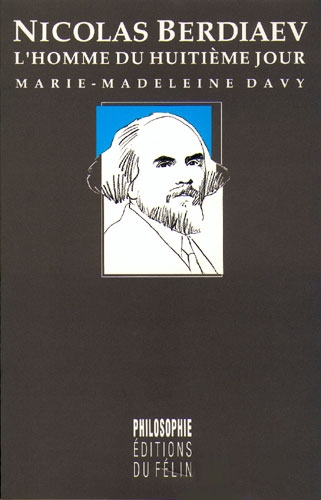 Caliban and emergent mechanical mastery taken together might well form an image to make one skip a breath. For once the “ebullience” of liberation-from-religion neutralizes “spiritual authority” and stimulates the “differentiation,” natural man, ego-driven and undisciplined, is bound to end up in possession of the Neo-Atlantean instrumentality, whereupon the prospect opens out on no end of mischief. Berdyaev’s historical diagnosis indeed runs in this direction. He even formulates the law of what he calls “the strange paradox”: “Man’s self-affirmation leads to his perdition; the free play of human forces unconnected with any higher aim brings about the exhaustion of man’s creative powers.” The Protestant Reformation of the German North and the so-called Enlightenment of the Eighteenth Century in France and the German states represent, in Berdyaev’s scheme, ever-lower stages of this descent into dissolution rather than the steps-upward of the ready version of Progress. The paradox of humanism consists in its having “affirmed man’s self-confidence” while also having “debased [man] by ceasing to regard him as a being of a higher and divine origin.”
Caliban and emergent mechanical mastery taken together might well form an image to make one skip a breath. For once the “ebullience” of liberation-from-religion neutralizes “spiritual authority” and stimulates the “differentiation,” natural man, ego-driven and undisciplined, is bound to end up in possession of the Neo-Atlantean instrumentality, whereupon the prospect opens out on no end of mischief. Berdyaev’s historical diagnosis indeed runs in this direction. He even formulates the law of what he calls “the strange paradox”: “Man’s self-affirmation leads to his perdition; the free play of human forces unconnected with any higher aim brings about the exhaustion of man’s creative powers.” The Protestant Reformation of the German North and the so-called Enlightenment of the Eighteenth Century in France and the German states represent, in Berdyaev’s scheme, ever-lower stages of this descent into dissolution rather than the steps-upward of the ready version of Progress. The paradox of humanism consists in its having “affirmed man’s self-confidence” while also having “debased [man] by ceasing to regard him as a being of a higher and divine origin.”
Whereas the Renaissance began with a quest for “perfect natural forms” and a plan “to regenerate and naturalize man’s social life,” it eventuated having “separated man still more irrevocably from nature than had been done by the Middle Ages.” Man would become doubly alienated – from spirit and nature. Berdyaev traces this process through the theoretical work of da Vinci to the practical work of the early Industrial Revolution (foreshadowed by Bacon) and then again through the final stages of cosmic alienation in the renewed theorizing of Marx and Nietzsche. Omitting Berdyaev’s details and coming to his conclusion, “humanist disintegration” leaves all institutions damaged and can itself generate no replacement-idea that might salvage them. Berdyaev feels the disaster most especially in modern moral life: “There can be no shadow of doubt that we are living in an epoch marked by the bankruptcy of that humanist morality which had been the guiding light of modern history.” Modern man faces a “volcanic eruption of historical forces” with “his sensibility… disrupted” and while enduring a state of “divorce and isolation from natural life.”
It is against this rich genealogical background to the modern condition that Berdyaev’s harrowing description of Twentieth-Century contemporaneity in his otherwise-abstract Fate of Man in the Modern World begins to take on its full meaning. Speaking for none other than myself, while expecting that some few might nevertheless agree with me, it strikes me as even more true today than it was in 1936, when Berdyaev wrote it, that “Man,” in the depth of his spirit, “has lost his worth,” not metaphysically (that would be impossible), but from the point of view of a prevailing drastically restricted and entirely utilitarian consciousness. Man indeed, as Berdyaev writes, “has been torn to tatters.” In the European Union, for example, and in the Federal Imperial dispensation in the United States, as it seems to me, “masses of men,” quite as Berdyaev put it, “have dropped out of the organized order and harmony of life”; they have “lost the religious sanction for their lives” and “they now demand obligatory organization as the sole means of avoiding final chaos and degeneration.” And again: “It is noteworthy that at a time when every religious sanction of authority has vanished, we live in a very authoritarian epoch.”
What are the characteristics of this “bestial” world, in which “inhumanity has begun to be presented as something noble, surrounded with an aureole of heroism” and in which also “man, in making himself God, has unmanned himself”? It is first of all a world dominated, not by “the human personality, or the value of truth,” but rather by “such values as power, technics, race-purity, nationality, the state, the class, the collective” and in which also “the will to justice is overcome by the will to power.” Berdyaev sees in these phenomena something other than “the triumph of base instincts,” those having been always present, because they are elements of human nature, without exercising the same extreme distortion in the overlapping social, cultural, and political environments. He sees them rather as the outcome of fatally attractive errors made five hundred years ago and steadily compounded over time. If there were a return of “idolatry,” for example, that would be precisely what one would expect in a society almost totally visually mediated whose orientation to simulacra of reality began with the obliteration of symbolism in the dominance of perspective in painting. If there were a destruction of politics and law in an upheaval of “instincts of revenge,” that would be precisely what one would expect in a society that has consummated the rejection of the Biblical morality that began in Humanist skepticism. Berdyaev sees, in sum, “a return of the human mass to the ancient collective with which its history began.”
 Berdyaev certainly never stood alone in his diagnosis of modern despiritualization. Similar if not identical insights occur under the scrutiny not only of the other writers mentioned at the outset (from Blixen to Undset) but more recently in the work of Jacques Barzun (especially in his great late-career book, From Dawn to Decadence), Roberto Calasso, Jacques Ellul, René Girard, Paul Gottfried, Kenneth Minogue, Roger Scruton, and Eric Voegelin, to name but a few more or less at random. Yet however many names one crowds together in a sentence, the shared judgment remains in the minority and under exclusion. In the prevailing liberal-progressive view, the world is monistic and one-dimensional: Everything is race, class, gender, or the state. In Berdyaev’s dissenting view, the world is dualistic and three-dimensional: “Christianity reveals and confirms man’s belonging to two planes of being, to the spiritual and to the natural-social, to the Kingdom of God and the Kingdom of Caesar.” It is the first dimension – actually a double dimension – of height and depth that guarantees freedom in the second dimension. The denial of the realm of height and depth is therefore the essence, a totally negative essence, of the Kingdom of Caesar intransigent. Berdyaev values man over society because he values spirit over matter,” the sole concern of men on the “natural-social” plane. The existing society indeed values matter exclusively, to the extent of having fixated itself on the finished product – the latest cell phone or handheld electronic game-player or that contradiction-in-the-adjective, the smart car – while deputizing foreign nations to produce these things. This same society, a kind of super cargo-cult, deracinated, demoralized, despiritualized, badly educated, deluged in pornography and ideology, and as conformist as any primitive tribe, vigorously denies the spirit, where not explicitly as articulate theory then in behavior.
Berdyaev certainly never stood alone in his diagnosis of modern despiritualization. Similar if not identical insights occur under the scrutiny not only of the other writers mentioned at the outset (from Blixen to Undset) but more recently in the work of Jacques Barzun (especially in his great late-career book, From Dawn to Decadence), Roberto Calasso, Jacques Ellul, René Girard, Paul Gottfried, Kenneth Minogue, Roger Scruton, and Eric Voegelin, to name but a few more or less at random. Yet however many names one crowds together in a sentence, the shared judgment remains in the minority and under exclusion. In the prevailing liberal-progressive view, the world is monistic and one-dimensional: Everything is race, class, gender, or the state. In Berdyaev’s dissenting view, the world is dualistic and three-dimensional: “Christianity reveals and confirms man’s belonging to two planes of being, to the spiritual and to the natural-social, to the Kingdom of God and the Kingdom of Caesar.” It is the first dimension – actually a double dimension – of height and depth that guarantees freedom in the second dimension. The denial of the realm of height and depth is therefore the essence, a totally negative essence, of the Kingdom of Caesar intransigent. Berdyaev values man over society because he values spirit over matter,” the sole concern of men on the “natural-social” plane. The existing society indeed values matter exclusively, to the extent of having fixated itself on the finished product – the latest cell phone or handheld electronic game-player or that contradiction-in-the-adjective, the smart car – while deputizing foreign nations to produce these things. This same society, a kind of super cargo-cult, deracinated, demoralized, despiritualized, badly educated, deluged in pornography and ideology, and as conformist as any primitive tribe, vigorously denies the spirit, where not explicitly as articulate theory then in behavior.
Hope, as Berdyaev saw it, lay in a pending reversal – that at the nadir of “de-Christianization” the core of Christianity might once again stand forth as “revealed in its pure form.” That such a revelation will happen, I say with Berdyaev is inevitable; but when it will happen and how much misery it will entail in order to happen, I confess even now at a date more than sixty years after Berdyaev’s death to lie beyond my small power of discernment.



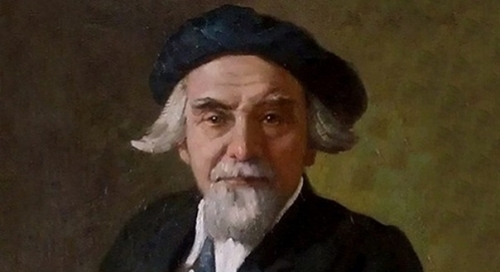

 del.icio.us
del.icio.us
 Digg
Digg
Les commentaires sont fermés.